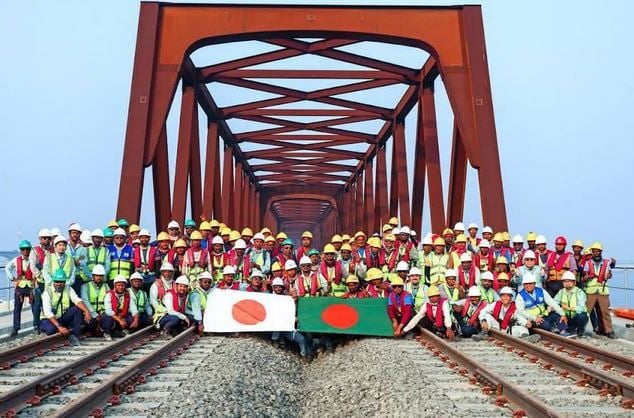The Bridge Division has started removing the old railway track from Jamuna Bridge after the opening of the new rail bridge. This initiative aims to reduce traffic congestion and widen the roadways on the bridge.
The removal process began on Thursday afternoon from the eastern end of the bridge in the Tangail section, with workers unscrewing nuts and bolts from the railway track.
On Friday morning, Executive Engineer of the Bridge Site Office, Ahsanul Kabir Pavel, confirmed the development.
He said that in April of this year, both the Sirajganj District Administration and the Bridge Division submitted separate proposals for the removal of the railway track. Following those proposals, the dismantling process has now officially commenced. Once the work is completed, the removed rail materials will be handed over to the railway authorities.
According to the Bridge Division, the current width of each lane on the Jamuna Bridge is 6.3 meters, whereas the ideal width should be 7.3 meters. Removing the railway line will free up about 3.5 meters of additional space, which will be distributed between the two lanes to further widen the road.
This expansion is expected to significantly ease traffic congestion, especially during peak travel times like Eid.
The Jamuna Bridge, inaugurated in 1998, was a landmark in Bangladesh’s transportation infrastructure, connecting road and rail traffic across the river.
However, cracks were discovered in parts of the bridge in 2008, prompting authorities to reduce train speeds. To resolve this issue, the country’s longest rail bridge, the “Jamuna Rail Bridge,” was constructed 300 meters away from the original bridge.
Passenger train services began operating on the new bridge for the first time on February 12 of this year. Since then, train operations on the old Jamuna Bridge have been entirely discontinued.


